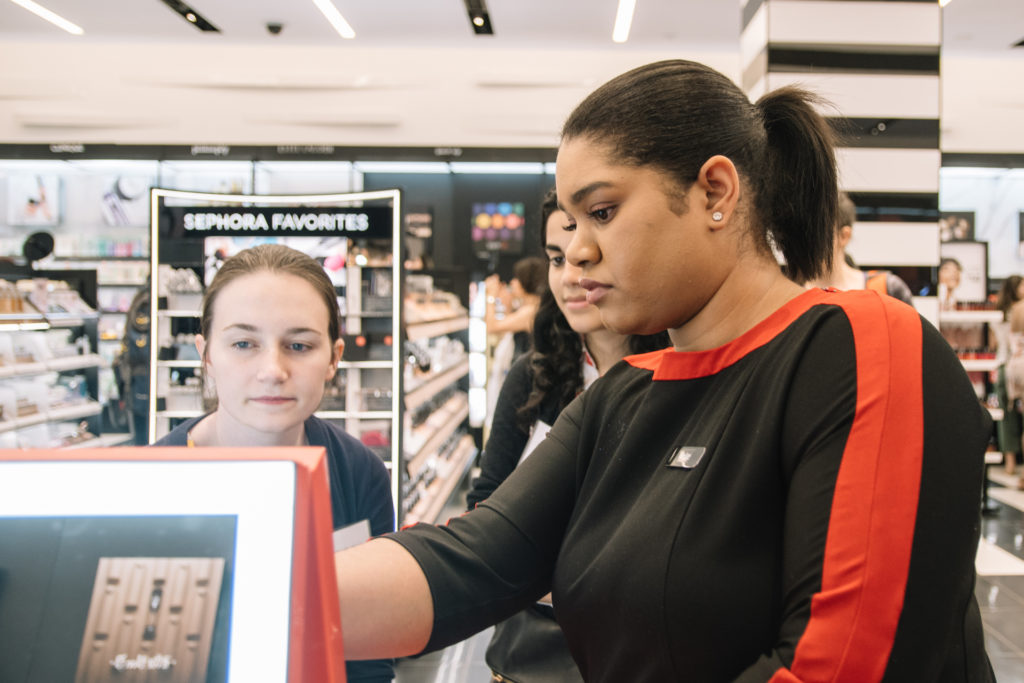
In today’s market, “this is the way we’ve always done it” is the most dangerous mind-set a retailer can have. As customer expectations grow as vastly and quickly as their choices, it’s not a great surprise that traditional retail players like Macy’s, J.C. Penney, and Sears, the last of which recently filed for bankruptcy, are struggling to keep up.
The current landscape is precarious for those hamstrung by the status quo, and that pressure comes from both the top down and the bottom up. From above, colossal brands are leveraging their diversity, capital and market share to innovate rapidly and dramatically. Initiatives that enhance simplicity and ease of experience, like Amazon Prime, Walmart’s Scan-and-Go, and Target’s in-app store mapping, powerfully differentiate these retailers and radically transform customer expectations seemingly overnight.
From a consumer perspective, perks that were once luxuries are now necessities: two-day shipping, personalized product recommendations, options to buy online and pick up in-store, etc. And although traditional retailers are investing in meeting these higher standards, the top dogs are making it nearly impossible to catch up as they pour money into exceeding expectations and redefining the entire commerce experience in their favor.
Behemoths aren’t the only ones challenging traditional retailers. As industry giants use their size to best stagnant retailers, smaller and more nimble direct-to-consumer brands are doing the same. Startups like Warby Parker, Away, and Rent the Runway were born digitally and don’t need to consider scale in the same way brick-and-mortar retailers do. Their strategies have always incorporated disruptive ways to approach e-commerce, which has afforded them the ability from day one to take innovative, calculated risks supported by user data. Now, as they expand judiciously into brick-and-mortar, they’re taking the same approach and leading the way in disrupting physical experiences as well.
Clothing brand Reformation is a great example of this omnichannel disruption: the brand’s store layout is showroom-style minimalist, and shoppers digitally select items that get delivered to a physical dressing room with personalized music and lighting. The risks of creating such an unconventional retail experience have paid off to the tune of over $100 million in revenue in 2017.
Retail isn’t dead, but it needs to adapt. Sticking solely to familiar customer experiences doesn’t cut it anymore; the strong will only get stronger. Rather than trying to chase Amazon.com’s prowess, laggard retailers need to invest in creative differentiation to stay ahead of the curve. That means, first and foremost, analyzing your customer data, scaling up and personalizing content accordingly, bridging audiences with thoughtful brand collaborations, and leveraging technology to create meaningful and enjoyable experiences. No more buying time with gimmicks veiled as features. Instead, brands must be intentional about implementing technology that makes touchpoints resonate in a valuable, net new, positive way.
An excellent example is Sephora’s Virtual Artist tool, which brings unique omnichannel value to customers both at home and in-store by solving for the challenge of in-store product sampling. The brand’s innovation with augmented reality transformed the cosmetics shopping experience to make it personalized, streamlined and fun, which has raised the standard for Sephora’s competitors in the $56 billion industry.
As shoppers warm up to retail tech, traditional retailers can only be seen as innovative if they offer technologies customers actually want. eMarketer reports that a majority of U.S. consumers would be more likely to shop at a retailer that offers an automated returns process, proximity-triggered mobile coupons, and smart try-on rooms, but only a small percentage of retailers offer those features.
Meanwhile, 75.8 percent of consumers consider in-store location tracking “creepy,” yet RFID and beacon technologies are on the rise. While investing in digital experience is crucial, spending millions just to have a mobile app or in-store customer sensors without focusing on genuinely augmenting or improving the customer experience is a waste. To avoid low adoption rates and poor return on investment, or, even worse, widespread consumer backlash, these middle players must invest in a strategy that includes data collection, detailed research, and journey mapping before attempting to transform expectations with unique technology initiatives.
Blindly playing catch-up is a losing game, especially as retail technology evolves rapidly. To push back on the squeeze from both monoliths and surprisingly fierce upstarts, retailers have to rise to the customer-first challenge to deliver holistic experiences that set the bar in the same ways digital natives Amazon and Warby Parker already have.
—
Read our CEO Dave Kilimnik’s Forbes article on how direct-to-consumer brands are setting a higher bar for retailers or check out our CX strategy offerings for the retail industry.








